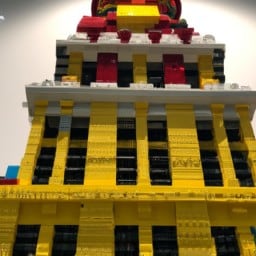
SharePoint is like a big box of LEGO blocks that organizations can use to build their own unique masterpiece. Sometimes, though, organizations need to get creative with their building to make sure the masterpiece is a true work of art.
That’s where SharePoint customization comes in. In this article, we will explore the types of customization, steps to customize SharePoint, and considerations for customization. So, let’s get building!
What is SharePoint Customization?
SharePoint customization is like giving your SharePoint site a makeover, but without the need for a glam squad. It involves modifying SharePoint’s default behavior, look, and feel to meet specific business needs.
Customizing SharePoint is like putting on a superhero costume – it makes you feel powerful and ready to save the world! With customization, organizations can improve user experience, increase productivity, better collaboration, and streamline business processes.
Customization can also help organizations to meet specific business requirements that cannot be achieved with out-of-the-box features.
Types of Customization
There are three types of SharePoint customizations, and they’re like the three musketeers of customization – always ready to come to your rescue!
Out-of-the-Box Customizations
Out-of-the-box customizations are like those pre-built LEGO sets you can buy at the store. They’re simple to assemble and require no customization skills. This includes modifying site settings, adding web parts, creating lists, and configuring workflows.
SharePoint Designer Customizations
SharePoint Designer is like a magic wand that allows you to create SharePoint pages and workflows with just a flick of your wrist. This type of customization requires no coding experience and can be done using a drag-and-drop interface.
Code-Based Customizations
Code-based customizations are like building a LEGO set from scratch – it requires advanced programming skills and should only be attempted by experienced developers. But the result can be a one-of-a-kind masterpiece that will make your competitors jealous!
Planning your SharePoint Customizations
Customizing SharePoint is like building a LEGO model – it requires careful planning and execution. Here are the steps involved in customizing SharePoint:

Planning tasks:
- Define the Requirements:
Define the business requirements and goals for the customization. This is like deciding what kind of LEGO model you want to build. - Identify the Out-of-the-Box Solutions:
Determine if there are any out-of-the-box solutions that can meet the requirements. This is like checking if you have the right LEGO pieces in your collection. - Choose the Appropriate Customization Option:
Determine the appropriate customization option based on the business requirements, skills, and resources available. This is like deciding whether to build the LEGO model from a kit or from scratch.
Create the Customization(s)
- Design the Site Structure:
Plan the site structure, navigation, and layout. This is like sketching out the design of the LEGO model. - Develop the Solution:
Create the solution using the chosen customization option. This is like assembling the LEGO model. - Test and Deploy the Solution:
Test the solution thoroughly and deploy it to the production environment. This is like showing off your finished LEGO model to your friends and family.
Additional Considerations for Customizations
When customizing SharePoint, it’s essential to consider security, performance, and scalability. It’s like making sure your LEGO model doesn’t fall apart when you pick it up!

Security:
Ensure that the customization does not compromise SharePoint’s security features and that it adheres to the organization’s security policies. This is like making sure your LEGO model is stable and won’t fall apart when you pick it up.

Performance:
Ensure that the customization does not impact SharePoint’s performance and that it does not introduce any performance bottlenecks. This is like making sure your LEGO model is not too heavy and that it can be moved easily.

Scalability:
Ensure that the customization can scale to meet the organization’s future needs and growth. This is like making sure your LEGO model can be expanded if you want to add more pieces later.
To Summarize…
Customizing SharePoint is like building a LEGO model – it requires careful planning, creativity, and skill. With the right customization approach and considerations in place, organizations can fully leverage SharePoint’s potential and achieve their business goals.
So, let’s get building and create some SharePoint masterpieces that will make our competitors jealous!